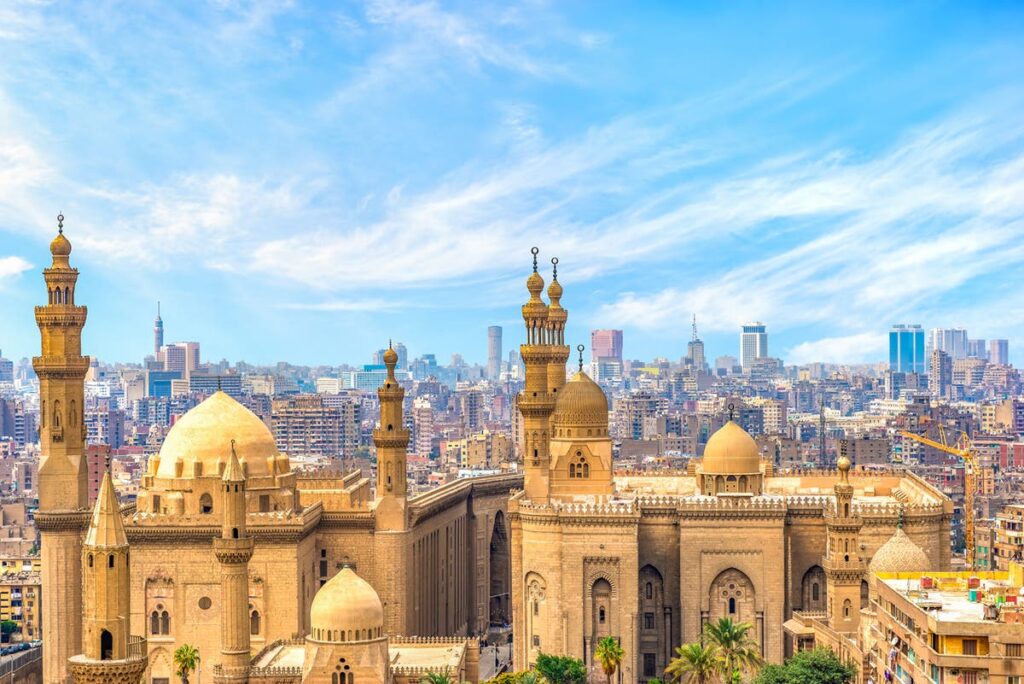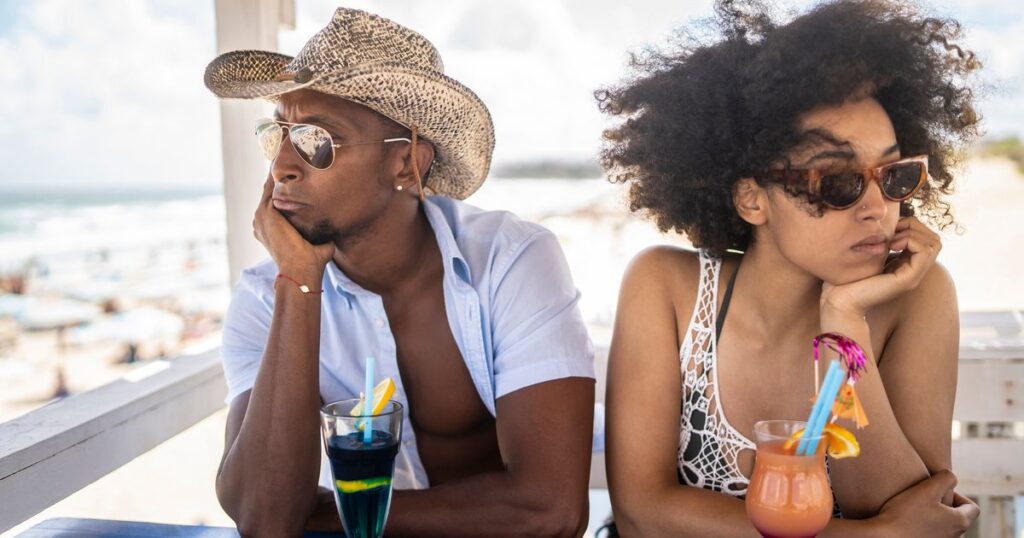Strassnig has contracted the community of Quebrada Ancha, home to about 20 families, to provide food and accommodations for Camino Real hikers. The village welcomed its first tourists in 2011, Strassnig told us, after receiving government funding to construct an outdoor kitchen and a bathroom with cold-water showers. Residents serve us bowls of sancocho, a comforting Panamanian chicken soup with yuca and plantains, at a long table underneath a thatched-roof open-sided shelter where we pitch our tents that evening.
From there, we cross a narrow inlet to begin our first walk along the Camino Real itself. We hike beneath swaying palms and scramble under barbed wire fences past grazing cows where local farms have encroached on the forest—a reminder of how the area has evolved since the route was first established—until we reach a row of uneven moss-covered cobblestones protruding irregularly from the dirt, one of the few remaining vestiges of the over-400-year-old road. We’re all silent for a moment; I can’t help thinking about how in just a couple of hours, we’ve come from the capital to walk on a centuries-old path.
Early the next morning, our boats motor past snowy egrets swooping across the marshes as we wave at a fisher who proudly holds up the tilapia he has just caught. The day is already the kind of humid that makes you sweat even when you’re sitting still.
We heft our packs and thank the boatmen, then Toribio leads us into the jungle while our other guide, Alex Guevara, watches that we are getting our footing on the slick-with-mud trail. We brush past leafy palms, crouch under a tree that’s fallen on the path, and hike up a ridge to a clearing where we look out over the deep green forest that surrounds us. I can’t resist taking a photo of my boots, which are already caked with dirt.
This becomes the rhythm over the next three days of our nearly 30-mile trek: Tramp up and down the rolling hills. Wade across a river. Stop for lunch in a local community. Try not to slide in the mud or lose our balance on the river stones. Sweat. Camp in a farmer’s field or beside a river, where we dunk each night to approximate a shower. As a novice jungle hiker who’s one of the slowest in our group, I realize I’m too hot and dirty to say I’m having fun—yet when we rest by the streams or share stories around the evening campfire, I begin to appreciate that I’m holding my own on this new-to-me experience. For three days in the humid but surprisingly peaceful jungle, we see no one else along the trail.
We end our trek near Portobelo, visiting a local cultural center where our host, Mama Ari, leads her students in traditional Congo dances. Owing largely to the trade of enslaved peoples by the Spanish, who brought many people from west-central Africa’s Congo Basin, more than 30% of Panama’s residents have African heritage, Mama Ari tells us. “Here in Portobello, we have taken the pain of slavery to strengthen us. And what you see here (among these young dancers) is that strength.” Accompanied by rhythmic drumming, the swirl of their flowing pollera skirts, patchworks of fuchsias, turquoises, and greens, create a spirited end to our time in the jungle.
A country of passage
Panama has been working with UNESCO for nearly 10 years to secure World Heritage status for the Colonial Transisthmian Route of Panamá, which includes the Camino Real, according to Carlos Fitzgerald, an archeologist and the director of International Cooperation for Panama’s Ministry of Foreign Relations.
While still in the research and documentation stage, this designation would expand Panama’s UNESCO heritage sites, which currently include Panama Viejo, the Historic District of Panama (also known as Casco Antiguo), and the Portobelo–San Lorenzo fortifications on the Caribbean shore, to encompass both the Camino Real and the Camino de Cruces, a second trade route that the Spanish built across Panama.
For centuries in Panama, “people were doing business moving from the Atlantic to the Pacific,” says Juan Antonio de la Guardia, the former president of the Tourism Guide Association of Panama, who has been trekking the Camino Real for many years. “That’s in our DNA. We have always been a country of passage.”
Premium IPTV Experience with line4k
Experience the ultimate entertainment with our premium IPTV service. Watch your favorite channels, movies, and sports events in stunning 4K quality. Enjoy seamless streaming with zero buffering and access to over 10,000+ channels worldwide.

















